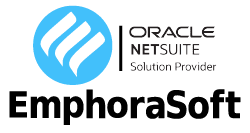
Optimizing Remote Workforce Collaboration with Integrated ERP Solutions
The surge in remote work has challenged organizations to rethink their operational strategies and adopt innovative solutions to maintain productivity and collaboration. Among these solutions, integrated Enterprise Resource Planning (ERP) systems have emerged as a cornerstone for businesses looking to optimize their remote workforce management.
The Evolution of Remote Work and Its Challenges
The transition to remote work has accelerated dramatically in recent years, driven by technological advancements, changing workforce expectations, and global circumstances. What was once considered an occasional perk has become a standard operating model for countless businesses across industries. This shift, while offering numerous benefits like increased flexibility and broader talent pools, also presents unique challenges that organizations must address to thrive in this new environment.
Remote teams often struggle with communication barriers, project visibility issues, data access limitations, and workflow inefficiencies. Without the right tools and systems in place, these challenges can lead to decreased productivity, collaboration bottlenecks, and ultimately, diminished business performance. As organizations continue to adapt to remote and hybrid work models, the need for comprehensive, integrated solutions becomes increasingly critical.
Understanding Integrated ERP Solutions in the Remote Work Context
Enterprise Resource Planning systems have long been the backbone of business operations, providing centralized platforms for managing various business processes, from finance and human resources to supply chain and customer relationship management. In the context of remote work, integrated ERP solutions take on an even more significant role, serving as unified digital environments where distributed teams can collaborate effectively regardless of their physical locations.
Modern cloud-based ERP solutions offer remote workforces several key advantages:
Centralized Data Access and Management
One of the most significant challenges for remote teams is accessing necessary information when working from different locations. Integrated ERP systems solve this problem by providing a central repository for all business data, ensuring that team members can access up-to-date information from anywhere with an internet connection. This centralization eliminates silos and ensures that everyone is working with the same set of facts, reducing errors and improving decision-making processes.
Streamlined Communication and Collaboration
Effective communication is the lifeblood of remote teams. ERP systems with built-in collaboration tools enable seamless interaction between team members across departments and locations. Features like in-system messaging, document sharing, collaborative editing, and task management foster a cohesive work environment where ideas can flow freely despite physical separation.
Process Automation and Standardization
Remote work environments benefit significantly from standardized processes that reduce confusion and ensure consistency. ERP systems excel at automating routine tasks and establishing standardized workflows that guide remote employees through various business processes. This automation not only increases efficiency but also helps maintain quality standards and compliance across distributed teams.
Real-time Visibility and Reporting
For managers overseeing remote teams, visibility into ongoing projects and performance metrics is essential. Integrated ERP solutions offer comprehensive reporting tools and dashboards that provide real-time insights into various aspects of business operations. This visibility enables proactive management and allows leaders to identify potential issues before they escalate into significant problems.
Key Features of ERP Solutions for Remote Workforce Optimization
Not all ERP systems are created equal when it comes to supporting remote work. Organizations should look for the following features when selecting an ERP solution for their distributed teams:
Cloud Accessibility
Cloud-based ERP solutions have become increasingly popular for remote workforces due to their accessibility from any location and device. Unlike on-premise systems that may require VPN connections or specific hardware, cloud ERP platforms allow team members to access the system through standard web browsers or dedicated mobile applications, facilitating truly flexible work arrangements.
Mobile Compatibility
Remote workers often utilize multiple devices throughout their workday. ERP systems with robust mobile applications enable employees to stay connected and productive even when they’re away from their primary workstations. Mobile compatibility ensures that critical business processes don’t grind to a halt when team members need to work on the go.
Integrated Communication Tools
While many organizations use separate communication platforms like Slack or Microsoft Teams, ERP systems with built-in communication features can streamline interactions by keeping them in the context of the work being discussed. These integrated tools reduce the need to switch between applications and create direct links between conversations and the relevant business data or processes.
Document Management and Collaboration
Remote teams rely heavily on digital documents for their daily operations. Advanced ERP solutions include document management systems that allow for secure storage, easy retrieval, version control, and collaborative editing. These features ensure that remote workers can collaborate on documents efficiently without creating conflicting versions or losing important information.
Workflow Automation
Automated workflows are particularly valuable for remote teams as they guide employees through complex business processes without requiring constant supervision or clarification. ERP systems with robust workflow automation capabilities can significantly reduce training time for new remote employees and ensure consistent process execution across the organization.
User-friendly Interfaces
The user experience of an ERP system can make or break its adoption, especially in remote work environments where in-person training and support may be limited. Intuitive interfaces that require minimal training and provide contextual guidance help remote employees become productive quickly and reduce frustration that can lead to workarounds or system abandonment.
Security Features
Remote work introduces new security considerations as employees access company systems from various networks and locations. ERP solutions designed for remote workforces include advanced security features such as multi-factor authentication, role-based access controls, encryption, and comprehensive audit trails to protect sensitive business data from unauthorized access or breaches.
Implementing ERP Solutions for Remote Teams: Best Practices
Successfully implementing an ERP system for a remote workforce requires careful planning and execution. The following best practices can help organizations maximize the benefits of their ERP investments:
Conduct a Thorough Needs Assessment
Before selecting an ERP solution, organizations should thoroughly evaluate their remote work challenges and identify the specific features and capabilities that would address these issues. This assessment should involve input from various departments and stakeholders to ensure that the chosen system meets the needs of the entire organization.
Prioritize User Experience and Adoption
The success of any ERP implementation largely depends on user adoption, which becomes even more crucial in remote work environments. Organizations should select systems with intuitive interfaces and invest in comprehensive training programs that accommodate remote learning styles. Creating a network of power users who can provide peer support can also accelerate adoption across distributed teams.
Implement in Phases
Rather than attempting a complete system overhaul at once, organizations should consider a phased implementation approach, particularly for remote teams. Starting with core modules that address the most pressing challenges allows remote employees to adjust gradually to the new system while experiencing immediate benefits that motivate continued adoption.
Establish Clear Communication Protocols
Clear guidelines for how remote teams should use the ERP system for communication and collaboration are essential for avoiding confusion and ensuring consistency. These protocols should specify when to use different communication channels within the system, how to document decisions, and how to escalate issues when necessary.
Develop Remote-friendly Training Programs
Traditional training approaches may not work effectively for remote teams. Organizations should develop multimedia training resources that accommodate various learning styles and can be accessed asynchronously by employees in different time zones. Interactive webinars, video tutorials, comprehensive documentation, and virtual hands-on exercises can all contribute to effective remote training.
Create Feedback Mechanisms
Continuous improvement of the ERP system relies on regular feedback from users. Organizations should establish multiple channels for remote employees to share their experiences, report issues, and suggest improvements. This feedback loop ensures that the system evolves to meet the changing needs of the remote workforce.
Monitor System Performance and Usage
Regular monitoring of system performance and usage patterns helps organizations identify potential bottlenecks or adoption issues among remote teams. Analytics can reveal which features are being underutilized, which processes might need refinement, and which departments might require additional support or training.
Cloud ERP vs. On-premise ERP for Remote Work
The debate between cloud-based and on-premise ERP solutions has taken on new dimensions in the context of remote work. While both options can support remote teams to some extent, cloud ERP systems offer distinct advantages for distributed workforces:
Accessibility Advantages
Cloud ERP systems provide native remote access capabilities, allowing employees to connect to the system from anywhere with an internet connection. On-premise solutions typically require additional technologies like VPNs or remote desktop solutions, which can introduce complexity and performance issues for remote workers.
Scalability and Flexibility
Remote workforces often need to scale quickly as organizations adapt to changing business conditions. Cloud ERP solutions allow for easier scaling of both user licenses and computational resources, enabling businesses to adjust their capabilities as their remote workforce grows or contracts.
Implementation Speed
Implementing a cloud ERP solution typically requires less upfront infrastructure investment and can be deployed more quickly than on-premise alternatives. This faster implementation can be particularly beneficial for organizations rapidly transitioning to remote work models.
Cost Considerations
The financial models for cloud and on-premise solutions differ significantly. Cloud ERP typically involves subscription-based pricing with lower initial costs but ongoing payments, while on-premise solutions usually require larger upfront investments but lower recurring costs. For organizations with limited capital or uncertain long-term remote work plans, the subscription model of cloud ERP may offer more financial flexibility.
Security Comparisons
Both cloud and on-premise solutions can provide robust security, but they address security challenges differently. Cloud providers invest heavily in state-of-the-art security measures and regular updates, potentially offering better protection than some organizations could implement internally. However, on-premise solutions give organizations more direct control over their security protocols, which may be preferable for highly regulated industries.
ERP Integration with Other Remote Work Tools
While comprehensive ERP systems provide many essential features for remote work, most organizations use additional specialized tools to support their distributed teams. Effective integration between these tools and the core ERP system can significantly enhance remote workforce productivity:
Video Conferencing Platforms
Integration between ERP systems and video conferencing tools like Zoom or Microsoft Teams enables seamless transitions from data analysis to face-to-face discussions. These integrations allow teams to launch meetings directly from within the ERP interface when they need to discuss specific reports, projects, or transactions.
Project Management Software
Many remote teams rely on dedicated project management tools like Asana, Trello, or Monday.com. ERP systems that integrate with these platforms can automatically synchronize project data, ensuring that information remains consistent across systems and eliminating the need for duplicate data entry.
Document Collaboration Tools
While ERP systems often include document management features, integration with specialized collaboration tools like Google Workspace or Microsoft Office 365 can enhance the document editing experience for remote teams. These integrations enable employees to use familiar tools while maintaining the connection to relevant business data in the ERP system.
Customer Relationship Management (CRM) Systems
For organizations using separate CRM systems, integration with the ERP platform ensures that remote sales and customer service teams have access to comprehensive customer information, including order history, billing status, and support interactions. This integration provides a 360-degree view of customer relationships that enhances service quality and sales effectiveness.
Time Tracking and Productivity Tools
Remote workforces often benefit from time tracking and productivity monitoring tools. When integrated with ERP systems, these tools can provide valuable insights into resource allocation, project profitability, and employee workload, helping managers make data-driven decisions about their remote teams.
Enhancing Remote Team Productivity with ERP Automation
Automation represents one of the most powerful capabilities of modern ERP systems, particularly for remote workforces. By reducing manual tasks and standardizing processes, automation drives productivity while minimizing the need for constant supervision:
Automated Approval Workflows
Remote work can sometimes slow down approval processes as documents and requests move between physically separated team members. ERP systems with automated approval workflows establish clear paths for various types of approvals, automatically routing items to the appropriate personnel and sending reminders when actions are pending.
Automated Reporting and Analytics
Regular reporting is essential for remote team management, but creating consistent reports manually can be time-consuming. ERP systems can automatically generate and distribute scheduled reports, ensuring that team members and managers receive timely information without manual intervention.
Intelligent Process Automation
Advanced ERP systems incorporate artificial intelligence and machine learning to identify patterns and suggest process improvements. For remote teams, this intelligent automation can provide valuable guidance when human supervision is limited, helping employees make better decisions and avoid common mistakes.
Automated Data Synchronization
Remote teams often work across multiple systems and databases, creating potential data consistency issues. ERP solutions with automated synchronization capabilities ensure that data remains consistent across integrated platforms, reducing errors and eliminating the need for manual data transfers.
Trigger-based Notifications
Keeping remote team members informed about relevant changes and events is crucial for maintaining productivity. ERP systems can automatically notify employees about important updates, approaching deadlines, or required actions based on predefined triggers, ensuring that critical information doesn’t fall through the cracks.
Security Considerations for Remote ERP Access
As organizations extend ERP access to remote locations, security becomes a paramount concern. Protecting sensitive business data while enabling productive remote work requires a comprehensive security approach:
Multi-factor Authentication
Beyond basic username and password requirements, multi-factor authentication adds an essential layer of security for remote ERP access. This feature ensures that even if credentials are compromised, unauthorized users cannot access the system without additional verification methods like SMS codes or authentication apps.
Role-based Access Controls
Not every employee needs access to all parts of the ERP system. Role-based access controls allow organizations to limit each user’s permissions to only the functions and data necessary for their job responsibilities, reducing the potential impact of compromised accounts.
Encryption Protocols
Robust encryption for both data in transit and data at rest protects information as it moves between remote employees and central servers. Modern ERP systems should implement industry-standard encryption methods to safeguard sensitive business data from interception or theft.
Activity Monitoring and Audit Trails
Comprehensive logging of user activities helps organizations detect suspicious behavior and investigate potential security incidents. ERP systems should maintain detailed audit trails of all actions taken within the system, providing visibility into who accessed or modified data and when these actions occurred.
Regular Security Updates
Cloud ERP providers typically handle security patches and updates automatically, ensuring that systems remain protected against newly discovered vulnerabilities. For on-premise solutions, organizations must establish regular update protocols to maintain security for their remote access systems.
Measuring the Success of ERP Implementation for Remote Teams
Evaluating the impact of an ERP system on remote workforce productivity requires systematic measurement across multiple dimensions:
Productivity Metrics
Organizations should track key productivity indicators before and after ERP implementation, including process completion times, output volumes, and error rates. These metrics can reveal whether the system is delivering the expected efficiency improvements for remote teams.
Collaboration Indicators
Successful ERP implementations typically increase collaboration among remote team members. Metrics such as cross-departmental projects, document co-editing sessions, and internal communication volumes can help quantify these collaboration improvements.
User Adoption Rates
The percentage of remote employees actively using the ERP system and its various features provides insight into adoption success. Low adoption rates in specific departments or for particular features may indicate usability issues or training gaps that require attention.
System Performance Data
For remote users, system performance significantly impacts productivity and satisfaction. Organizations should monitor metrics like response times, system availability, and connection reliability to ensure that remote employees can work efficiently without technical barriers.
Return on Investment Analysis
Comprehensive ROI analysis should consider both tangible benefits (like reduced administrative costs or increased output) and intangible advantages (such as improved decision-making or enhanced customer service) resulting from the ERP implementation for remote teams.
Future Trends in ERP Solutions for Remote Workforces
As remote work continues to evolve, ERP systems are adapting to meet emerging needs and leverage new technologies:
AI-Enhanced Collaboration
Artificial intelligence is increasingly being incorporated into ERP systems to enhance remote collaboration through features like automatic meeting summaries, smart document categorization, and intelligent process recommendations that guide remote workers through complex tasks.
Augmented Reality Integration
Some forward-thinking ERP providers are exploring augmented reality (AR) applications for remote work scenarios, particularly in industries like manufacturing or field service where visual guidance can improve remote task completion and reduce the need for on-site visits.
Advanced Analytics for Remote Performance Management
Next-generation ERP systems are incorporating sophisticated analytics tools that help managers understand remote team performance patterns, predict potential issues, and identify opportunities for process optimization based on comprehensive data analysis.
Expanded Mobile Capabilities
As remote work becomes more flexible, ERP systems are expanding their mobile functionalities to support employees working from various devices and locations. These capabilities go beyond basic data access to include advanced features like mobile approval processing, on-the-go reporting, and location-aware functionality.
Enhanced Virtual Collaboration Spaces
Some ERP providers are developing integrated virtual workspaces that combine project management, communication, and business process execution in immersive digital environments designed to recreate the collaborative atmosphere of physical offices for remote teams.
Case Studies: Successful ERP Implementations for Remote Teams
Global Manufacturing Company
A mid-sized manufacturing company with facilities and remote employees across three continents implemented a cloud-based ERP solution to standardize operations and improve collaboration. The implementation focused particularly on supply chain visibility and production planning modules, resulting in a 30% reduction in planning cycle time and significantly improved inventory accuracy despite having key personnel working remotely.
Professional Services Firm
A consulting firm with over 500 professionals transitioned to a fully remote model and implemented an integrated ERP system with strong project management and time tracking capabilities. The solution enabled the firm to maintain consistent service delivery standards across distributed teams, improve resource allocation by 25%, and increase project profitability through better visibility into consultant utilization.
Retail Organization
A retail chain with corporate staff working remotely implemented an ERP solution focused on inventory management, forecasting, and business intelligence. The system provided remote buyers and planners with real-time sales data and automated replenishment recommendations, leading to a 15% reduction in stockouts and improved gross margins despite the challenges of remote merchandise planning.
Healthcare Provider Network
A network of outpatient clinics implemented a healthcare-specific ERP solution that enabled administrative staff to work remotely while maintaining effective operations. The system streamlined patient scheduling, billing, and record management processes, resulting in reduced administrative costs and improved patient satisfaction despite having a distributed workforce handling these functions.
Conclusion: Building a Resilient Remote Workforce with ERP Solutions
The shift to remote work represents both a challenge and an opportunity for organizations across industries. While distributed teams face unique obstacles in communication, collaboration, and process management, integrated ERP solutions provide the technological foundation needed to overcome these challenges and build truly resilient remote workforces.
FAQ's
Integrated ERP solutions centralize business data and processes—such as finance, HR, supply chain, and CRM—into one unified platform. This centralization ensures remote teams have access to accurate, real-time information, which is essential for effective collaboration and decision-making.
They overcome common remote work challenges by providing centralized data access, streamlining communication through built-in collaboration tools, automating routine tasks, and offering real-time reporting to enhance transparency and workflow efficiency.
Key features include cloud accessibility, robust mobile compatibility, integrated communication and document management tools, workflow automation, user-friendly interfaces, and strong security measures like multi-factor authentication and role-based access controls.
Cloud-based ERP systems offer native remote access from any internet-connected device without the need for VPNs or specific hardware. This flexibility enables remote teams to work seamlessly from anywhere, ensuring continuous access to critical business information.
Built-in communication tools—such as in-system messaging, document sharing, and collaborative editing—help keep team discussions contextual and directly linked to relevant business data, reducing the need to switch between different platforms.
Automation minimizes manual intervention by streamlining approval workflows, generating automated reports, synchronizing data across systems, and triggering notifications. This reduces errors, speeds up processes, and allows remote teams to focus on higher-value tasks.
Key security features include multi-factor authentication, encryption for data in transit and at rest, role-based access controls, comprehensive audit trails, and regular security updates—all crucial for protecting sensitive business data accessed from diverse locations.
Integrating ERP with platforms like video conferencing, project management software, and CRM systems creates a seamless ecosystem. This integration reduces duplicate data entry, maintains consistency, and enhances overall workflow by linking communication and operational processes.
9. What best practices should organizations follow when implementing ERP solutions for remote teams?
Organizations should start with a thorough needs assessment, choose user-friendly systems, implement the solution in phases, establish clear communication protocols, develop remote-friendly training programs, and set up regular feedback mechanisms to continuously refine the system.
Emerging trends include AI-enhanced collaboration features (such as automated meeting summaries and smart document categorization), augmented reality integration for immersive remote assistance, advanced analytics for performance management, and expanded mobile capabilities to support increasingly flexible work arrangements.







